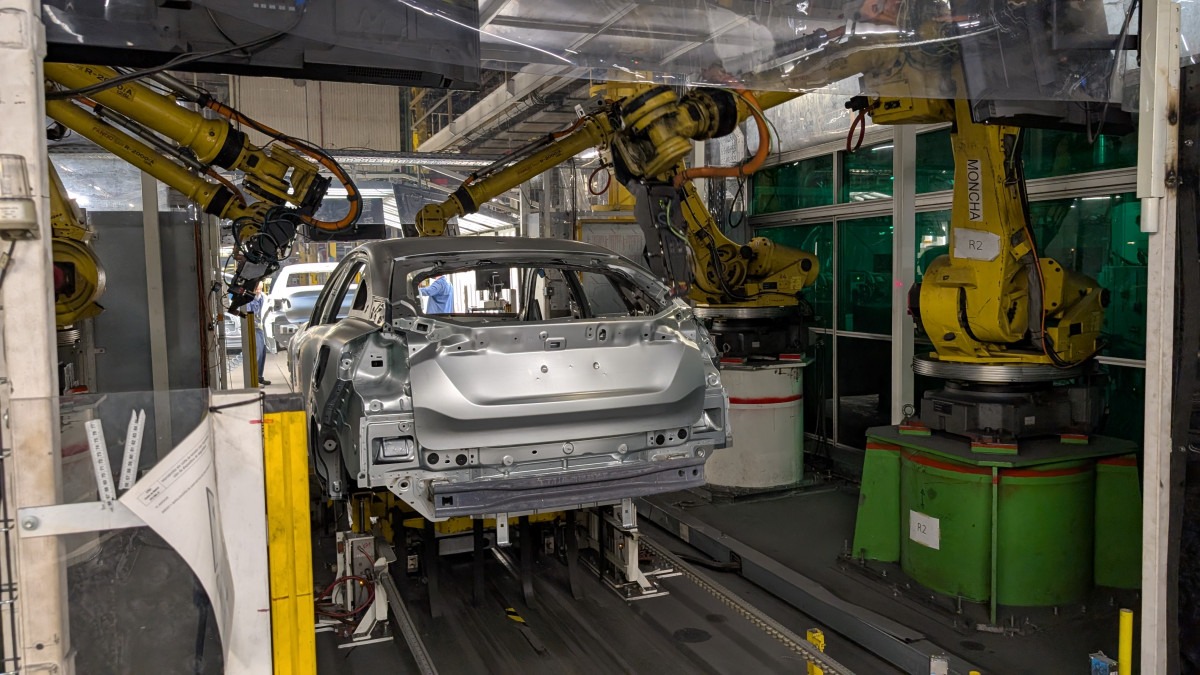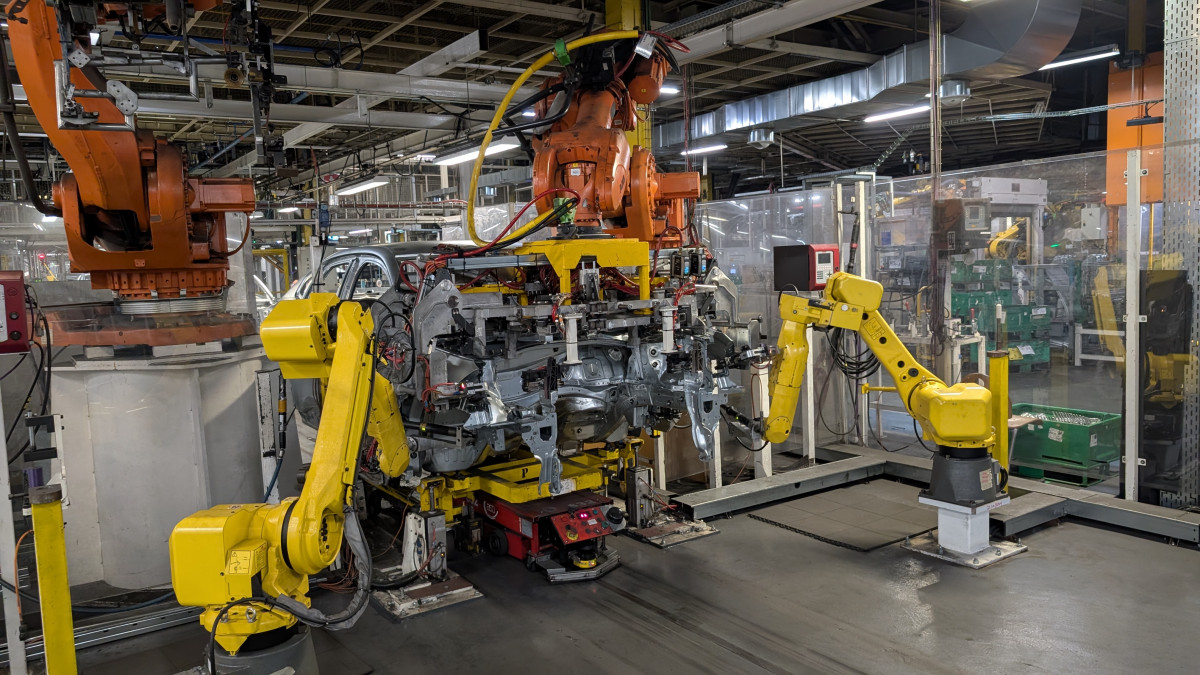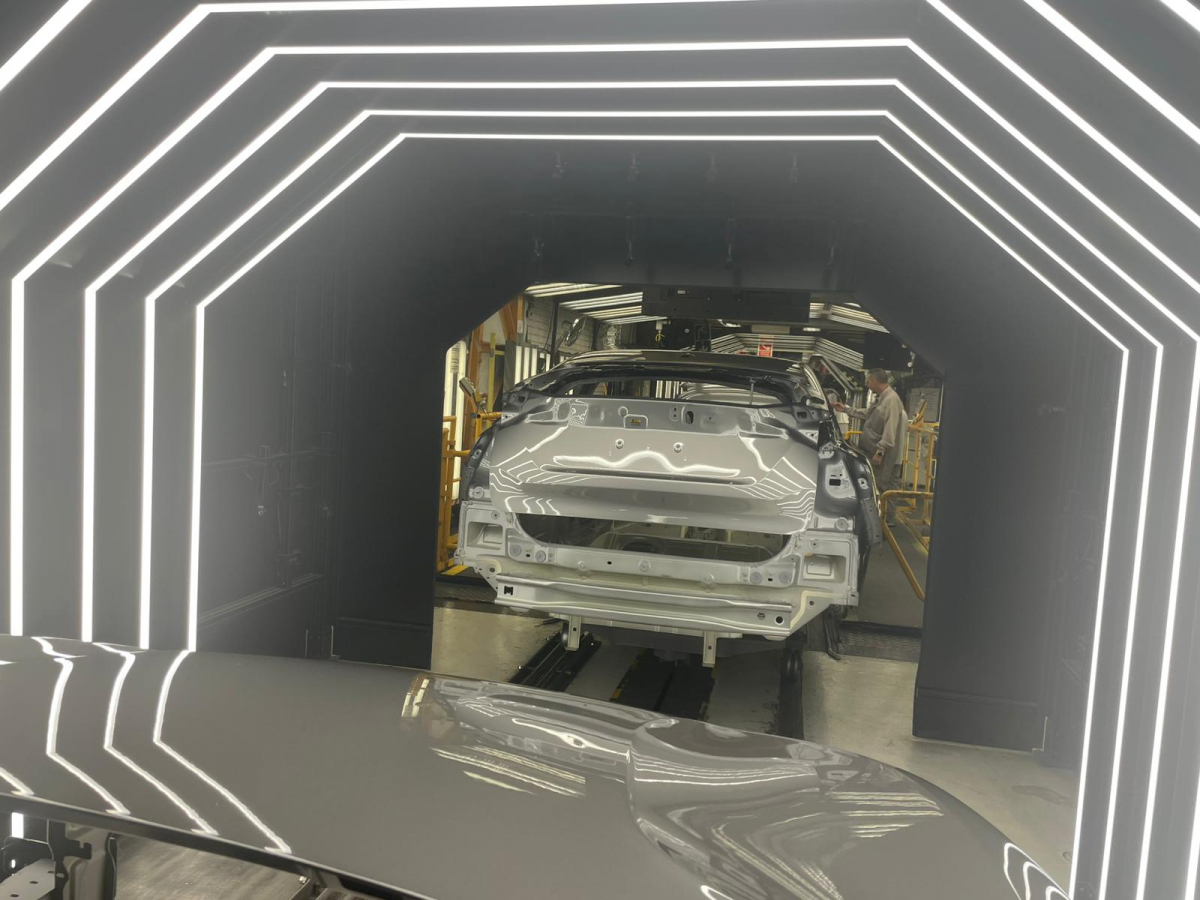Stellantis Madrid, a model of resilience

The current Stellantis factory in Madrid is a facility steeped in history, dating back 73 years to the entrepreneurial businessman Eduardo Barreiros's launch of his automotive project. Since the 1950s, the Madrid plant has achieved numerous milestones, producing several models exclusively worldwide. Report published in the printed edition of AutoRevista (No. 2404).
Eduardo Barreiros took his first steps by opening a small workshop that converted gasoline engines into diesel. But his model quickly evolved: he soon focused on the manufacture of agricultural and industrial vehicles and, later, passenger cars. This latest milestone (passenger car manufacturing) came with the entrepreneur's partnership with Chrysler in the 1960s, giving the factory the joint name Barreiros Diesel for obvious reasons. A partnership that culminated in the North American brand acquiring 100% of the plant and, therefore, a new brand name (Chrysler Spain), which remained in place until the North American brand decided to withdraw from Europe.
Later, the French group PSA, parent company of Peugeot and Citroën, purchased its Spanish factories; Peugeot began producing its vehicles there under the Talbot brand, and PSA development vehicles began to be manufactured at the plants. Finally, the plant we know today as Stellantis Madrid was renamed PCAE (Peugeot Citroën Automobiles Spain), which was the precursor to Stellantis, since the company's incorporation in 2021 as we know it today.

Past versus present
More than 70 years is a long time. A time that, as could not be otherwise, translates into acquired know-how and technological innovation for Stellantis Madrid.
And over the years, the plant has incorporated countless innovations, such as its laser welding, a pioneering project within the group and developed in Spain. It consists of a welding station where the filler material is melted by the effect of a laser that follows the trajectory of the parts to be assembled. Its main application is welding on exterior areas of the bodywork. On these surfaces, it is crucial to ensure maximum uniformity, appearance, and tightness of the weld.
Then there are its AGVs (Automated Guided Vehicles). These are small, self-guided vehicles used for internal transport of both finished bodies and the transport and supply of parts to the edge of the line at the assembly plant workstations.
A pioneering plant in automation
On the other hand, it is important to highlight that the Madrid plant was a pioneer in the automation of the MEF line, or in other words, the finishing line of the bodywork plant.
This facility is where fenders and openings (such as doors, hoods, and tailgates) are assembled and bolted to the bodywork fully automatically. The system works thanks to an industrial robot that places the part to be bolted onto the bodywork and secures it in position while a cobot secures it, supplies the necessary hardware, and performs the bolting operation.
However, this is not the only innovation in robotics. The Stellantis Madrid plant incorporated artificial vision (Eagle Eye) at different points in the factory, such as the bodywork welding and assembly plant. Specifically, the manufacturer installed a robotic station with machine vision and learning that controls both the appearance and geometry (flush, clearance, and overhang) of the body and its moving parts.
Likewise, Stellantis installed this technology in its paint shop (including a tunnel to check the appearance of the paint applied to the bodies) and in its assembly plant, where it included a station with fixed machine vision cameras to control the conformity of the finished vehicle. The objective: to verify both the appearance of the vehicles and the assembled components to confirm that the product corresponds to the equipment requested by the customer.
In short, this is a crucial advance, as these facilities have contributed, as Stellantis explains, to optimizing certain operations, maintaining constant repeatability in assembly, ensuring geometry, and maintaining uniformity throughout the day in monitoring the geometry and appearance of the vehicles.
Battery Self-Supply
Another notable unique feature of the Stellantis plant in Madrid is its battery workshop. Implemented very recently in 2024, this system allows the plant to assemble all the batteries for the vehicles it produces, thus improving aspects such as logistics and efficiency. It also allows the factory to adapt to fluctuations in demand for 100% electric vehicles.
Along these lines, the factory also has photovoltaic panel installations for self-consumption, which have been implemented in several phases. The first was placed on the roof and covers 30,000 square meters of surface area, producing 10,289 MWh annually. Subsequently, in a second and third phase, photovoltaic panels mounted on canopies on the ground were incorporated. Together, these panels cover 30,056 m2 and are capable of generating 8,740 MWh.
Surplus energy is also a resource
Although the panels are not the plant's only energy supply system. As a complement to these photovoltaic installations, a battery is also being installed to store excess energy generated during periods of lower consumption, allowing it to be used when energy demand at the plant exceeds generation.
Specifically, with the combined photovoltaic installation and storage battery, the Madrid plant is capable of generating 18,759 MWh per year (typical annual consumption of 5,380 homes in Spain) and can achieve up to 70% autonomy.

Decarbonization on the roadmap
In the other hand, within the framework of the "Stellantis Carbon Net Zero Strategy" project, the plant has made significant progress in reducing its use of fossil fuels, primarily gas.
For example, regarding winter heating, the plant is gradually replacing gas boilers with heat pumps, whose electrical supply is powered by the aforementioned photovoltaic installations. Currently, all production workshops are heated using electricity.
Finally, in the painting process, which is traditionally the largest consumer of gas in the automotive industry (ovens, bathroom heating, etc.), significant changes are also being made, as numerous facilities have already been upgraded with the aforementioned heat pump system.
The vehicles at the Madrid plant, at a glance
Many vehicles have been built at the Stellantis Madrid plant since its inception. Specifically:
- Dodge 3700 GT (27,311 units manufactured between 1965 and 1977).
- Simca 1000 (232,168 units manufactured between 1966 and 1977)-
- Simca 1200 and Simca 1200 BK (422,138 units manufactured between 1969 and 1981).
- Talbot 150 (120,587 units manufactured between 1977 and 1983).
- Talbot Horizon (167,316 units manufactured between 1980 and 1987).
- Talbot Solara (41,046 units manufactured between 1980 and 1986).
- Talbot Samba (23,954 units manufactured between 1981 and 1984).
- Citroën LNA (4,267 units manufactured between 1983 and 1985).
- Peugeot 205 (1,191,237 units manufactured between 1983 and 1999).
- Peugeot 309 (122,749 units manufactured between 1986 and 1991).
- Peugeot 306 (287,970 units manufactured between 1993 and 2001).
- Peugeot 306 BK (314,036 units manufactured between 1997 and 2002).
- Citroën Xsara (348,565 units manufactured between 1998 and 2004).
- Citroën C3 (368,626 units manufactured between 2002 and 2010).
- Citroën C3 Pluriel (115,129 units manufactured between 2002 and 2010).
- Citroën Xsara BK (10,677 units manufactured between 2004 and 2005).
- Peugeot 207 (543,706 units manufactured between 2005 and 2012).
- Peugeot 207 cc (190,982 units manufactured between 2006 and 2015).
- Peugeot 207 SW (48,834 units manufactured between 2011 and 2013).
- C4 Cactus 1st generation (278,987 units manufactured between 2014 and 2018).
- C4 Cactus 2nd generation (137,774 units manufactured between 2018 and 2020)
- Citroën c4 and ec4 (2020).


Iveco Group, fabricante europeo en vehículos comerciales y movilidad, y el grupo indio Tata Motors, han anunciado que han alcanzado un acuerdo, por el que la compañía asiática adquiere ala firma italiana, para crear un grupo de vehículos comerciales con el alcance, la cartera de productos y la capacidad industrial necesarios para convertirse en líder mundial

La sostenibilidad es un tema cada vez con mayor importancia en la cultura empresarial. Los criterios ESG (Environment, Social and Governance), vertebran gran parte de las acciones de las compañías. Ante este contexto hemos hablado con Carolina López, gerente de Comunicación y Sostenibilidad de SERNAUTO.

La actual fábrica de Stellantis en Madrid es una instalación con mucha historia, cuyos orígenes se remontan a hace 73 años, cuando el emprendedor empresario Eduardo Barreiros arrancó su proyecto vinculado al mundo del motor. Desde aquellos años 50, la planta madrileña ha alcanzado numerosos jalonados con la fabricación de varios modelos en exclusiva mundial.

El Consejo de Administración de Renault Group, reunido hoy bajo la presidencia de Jean-Dominique Senard, ha decidido nombrar a François Provost CEO de Renault S.A. y Presidente de Renault s.a.s. con efecto a partir del 31 de julio, por un mandato de cuatro años.

BYD ha comunicado que se ha convertido en el primer fabricante de automóviles del mundo en alcanzar los 13 millones de unidades de vehículos enchufables producidas. El protagonista que ha permitido alcanzar esta cifra ha sido una unidad del YANGWANG U7 que salió de la línea de producción el 21 de julio.



